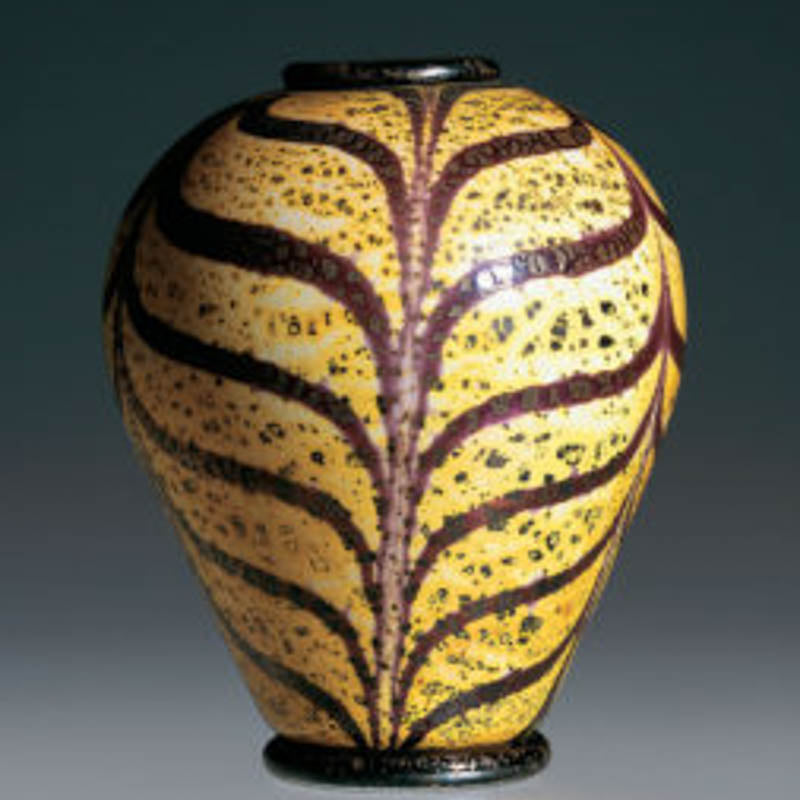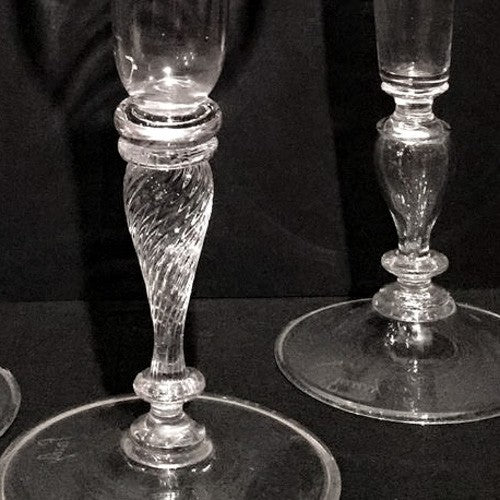Fenicio
Decoration obtained by applied thread of lattimo glass or pasta vitrea round the body of the item in a festoon-like weavy pattern, obtained by using a kind of metal comb called "maneretta" passed uniformly over the surface.
This technique goes back to the ancient Egyptians and Phoenicians to decorate perfume bottles and cruets. During the nineteenth century it met with great success in Murano, as well as in the twentieth: in the late 1920s it was used by the MVM Cappellin & Co. Firm to make a series of vases, designed by Carlo Scarpa .
This item were characterized by outstanding refinement in both the purity and the combination of colours of the vitreous pastes together with the application of gold and silver leaves. During the 50s the Barovier & Toso firm also used light variations such as in the "neolitici" and in the "graffiti"; in both cases, the applications were submerged by a layer of colourless glass after being "combed".




Leave a comment
All comments are moderated before being published.
This site is protected by hCaptcha and the hCaptcha Privacy Policy and Terms of Service apply.